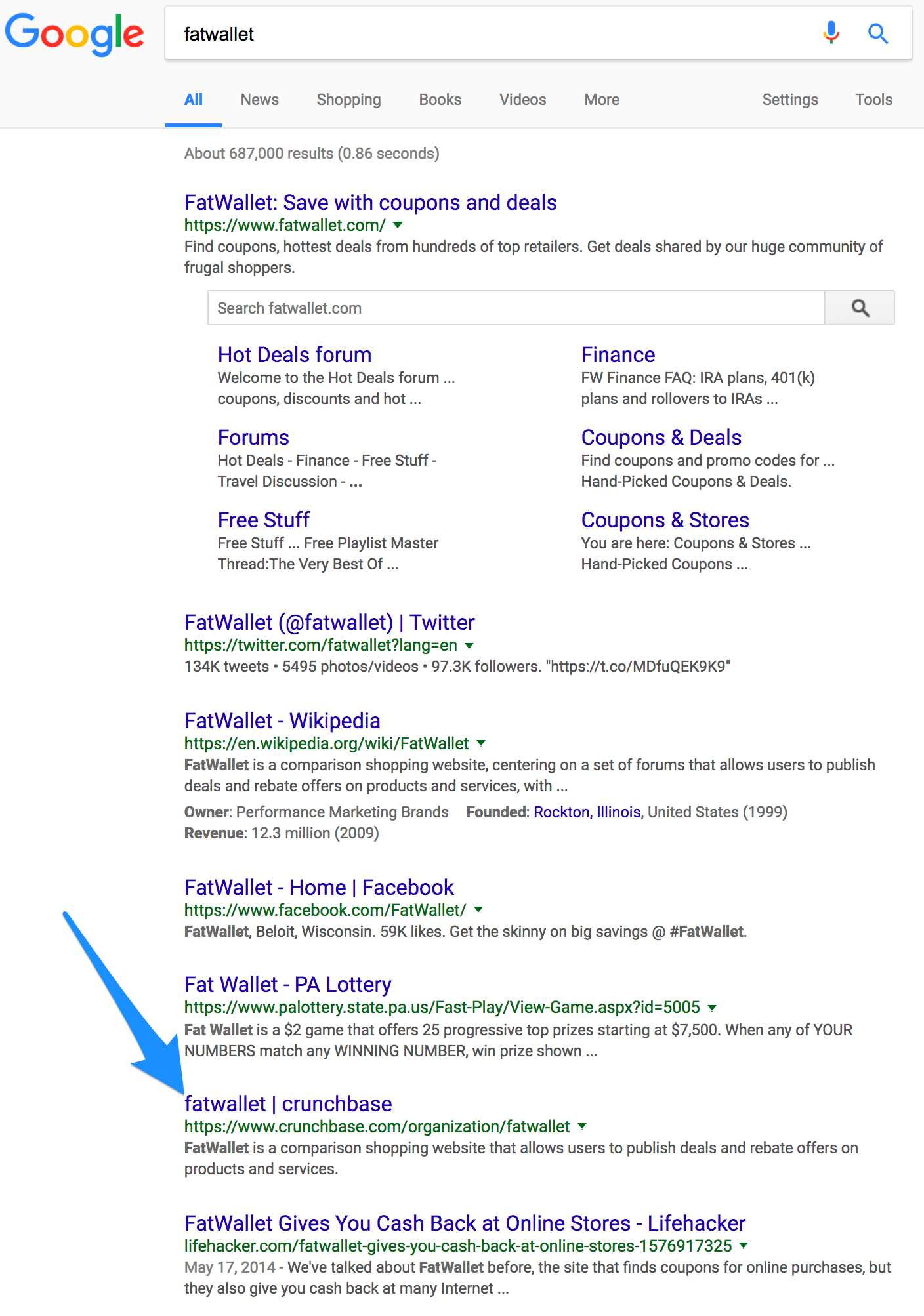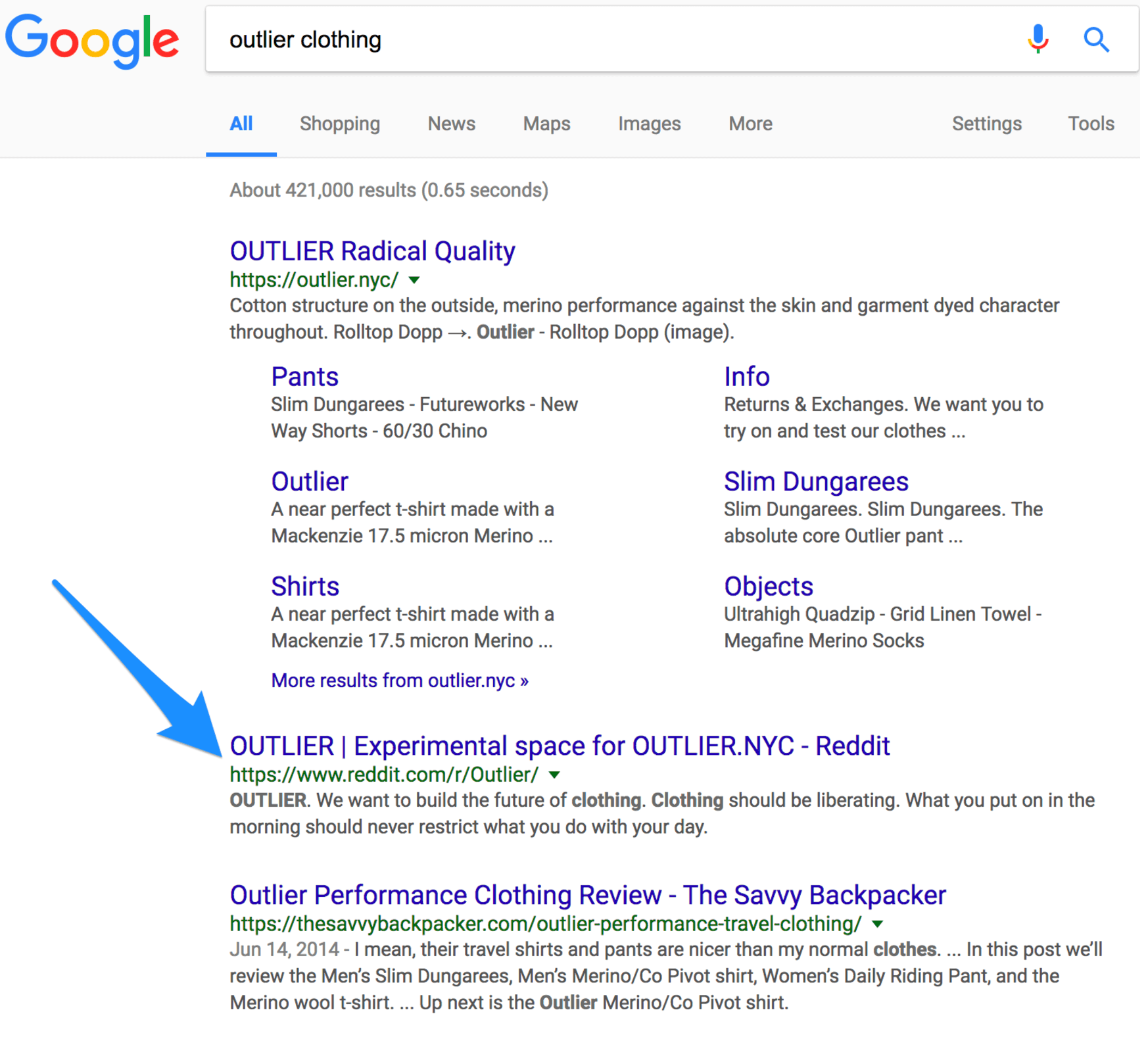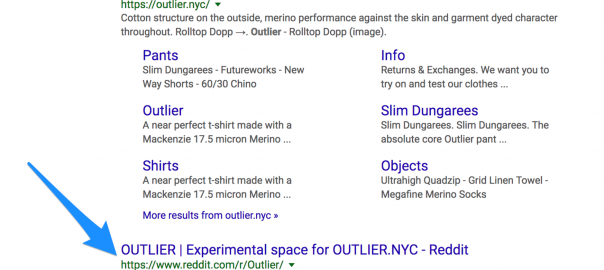How can you take more control of the SERPs for your brand name, beyond using your own site? Columnist Brian Patterson shares ideas for maximizing positive portrayals of your company on page one.

This article was co-authored with my colleague at Go Fish Digital, Samantha Hughes.
Working at an agency that does a large amount of online reputation and crisis management, brand protection is always top of mind. I’ve written about how autocomplete is your brand’s true first impression, and that is still very much the case. What comes up when people search on your brand name also sheds light on your company’s reputation — even when those results aren’t from your own site.
If you aren’t actively working on what ranks for your brand name, you leave yourself exposed to potential damage from:
- complaint websites that can start ranking for your brand name.
- competitors who would see value in optimizing negative content about your company for search.
- less-than-flattering reviews beginning to rank well for your brand name.
As Benjamin Franklin said, “An ounce of prevention is worth a pound of cure.” It is much better to spend time proactively preventing one of the situations above, rather than reacting to it after the fact.
And the prevention isn’t all that difficult. If you can create some strong properties that can rank alongside your own domain, you can build a proverbial “wall” that would help suppress negative content from surfacing on page one for your brand name.
Before undertaking the SEO tactics to get that “wall” of content to rank, though, you have to have the right content available to work with. When working with clients, we always start by identifying existing pages that could rank well. These should be highly targeted (brand name in the URL, title and so on), have good domain authority, and ideally already rank on page two or three.
After that, though, we often turn to creating new content to rank. This new content, combined with what already exists, gives us a lot of bricks to build that strong wall.
The following are some common, and not-so-common, options for creating content that can rank well for your brand name.
1. Crunchbase
Creating a profile on Crunchbase is super-easy, and your profile there has the potential to rank really well. The fact that Crunchbase has been around for over a decade and has domain authority of 89, according to Moz, means that Google tends to trust content on the site.
Profiles on Crunchbase can be a simple or as rich as you’d like them to be. We encourage our clients to use every category possible, filling out as much information and making it a really useful profile for people actually researching the company.
An example of one of the categories is “News,” which allows businesses to add news articles/publications to their profile. As new articles are posted about your brand, we recommend you add them here, which will keep the page updated with fresh content, as well as providing a backlink (albeit no-followed) to that new article.
An example of Crunchbase ranking on page one for a brand name is for Fatwallet, pictured below. Their profile could use some expanding, as it really only highlights the “News” and “Competitor” categories, but even so, it ranks well for a pretty popular internet brand name.

2. Reddit
Marketing on Reddit is a minefield, but when done right, it can be a huge branding win. However, what most people don’t realize is that it can help with online reputation management (ORM) as well. Cooler brands with large fan bases can have dedicated, highly-active subreddits where loyalists interact and share relevant content.
Outlier Clothing, makers of high-end everyday wear, have such a community, whose digital home is on the r/Outlier subreddit, which ranks #2 in Google when you search “Outlier Clothing.”
If you have a community of people who love your services or products, and that community overlaps with Reddit’s demographic, studying what Outlier did would be wise, as it could also be a smart play for your brand.

[Read the full article on Search Engine Land.]
Some opinions expressed in this article may be those of a guest author and not necessarily Marketing Land. Staff authors are listed here.
Marketing Land – Internet Marketing News, Strategies & Tips
(65)
Report Post







